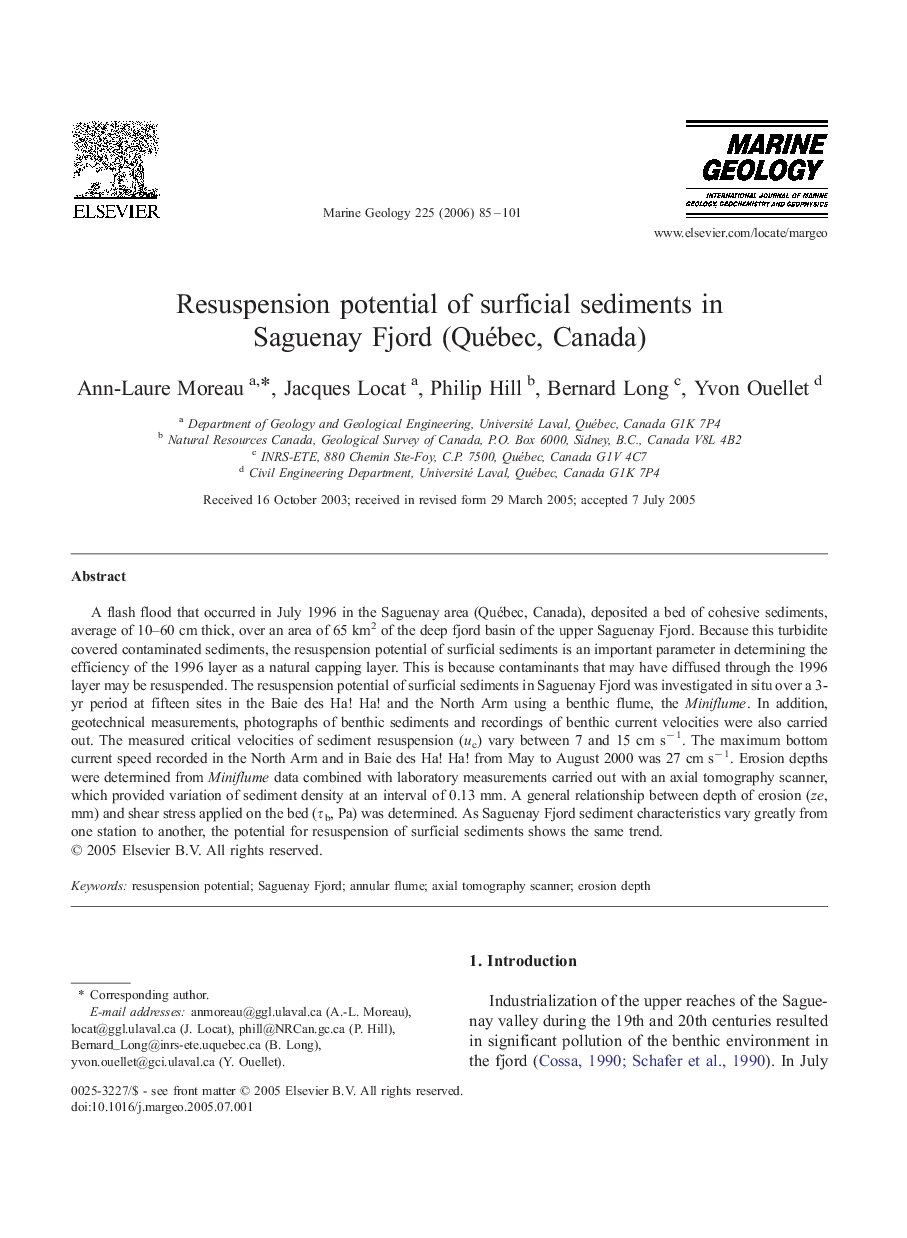| Article ID | Journal | Published Year | Pages | File Type |
|---|---|---|---|---|
| 4719796 | Marine Geology | 2006 | 17 Pages |
A flash flood that occurred in July 1996 in the Saguenay area (Québec, Canada), deposited a bed of cohesive sediments, average of 10–60 cm thick, over an area of 65 km2 of the deep fjord basin of the upper Saguenay Fjord. Because this turbidite covered contaminated sediments, the resuspension potential of surficial sediments is an important parameter in determining the efficiency of the 1996 layer as a natural capping layer. This is because contaminants that may have diffused through the 1996 layer may be resuspended. The resuspension potential of surficial sediments in Saguenay Fjord was investigated in situ over a 3-yr period at fifteen sites in the Baie des Ha! Ha! and the North Arm using a benthic flume, the Miniflume. In addition, geotechnical measurements, photographs of benthic sediments and recordings of benthic current velocities were also carried out. The measured critical velocities of sediment resuspension (uc) vary between 7 and 15 cm s− 1. The maximum bottom current speed recorded in the North Arm and in Baie des Ha! Ha! from May to August 2000 was 27 cm s− 1. Erosion depths were determined from Miniflume data combined with laboratory measurements carried out with an axial tomography scanner, which provided variation of sediment density at an interval of 0.13 mm. A general relationship between depth of erosion (ze, mm) and shear stress applied on the bed (τb, Pa) was determined. As Saguenay Fjord sediment characteristics vary greatly from one station to another, the potential for resuspension of surficial sediments shows the same trend.
